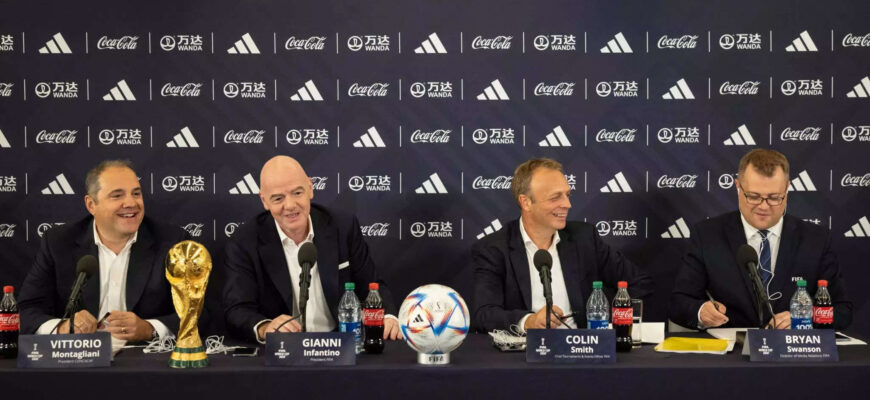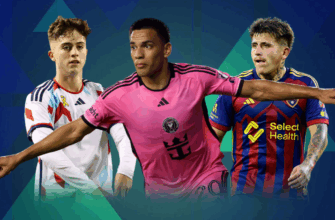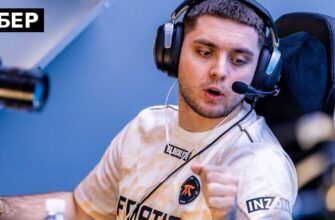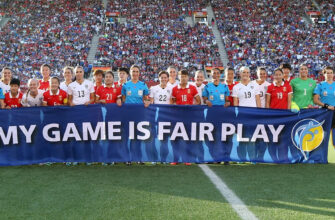With the international football calendar for 2024-25 now concluded, attention is sharply turning towards the marquee event looming large on the horizon: the 2026 FIFA World Cup, set to unfold across North America. Just one year separates us from the tournament`s knockout stages, prompting an assessment of which national teams appear best positioned to make a deep run and potentially lift the coveted trophy.
The expanding 48-team field already features the three automatic qualifiers – co-hosts USA, Canada, and Mexico. They are joined by a growing list of qualified nations from various confederations, including six from Asia (Japan, South Korea, Iran, Australia, Jordan, Uzbekistan) and New Zealand from Oceania, marking their first World Cup appearance in 16 years. As qualification battles intensify across the globe, the competitive landscape is beginning to take shape.
While the full field is far from settled, a snapshot based on current form, squad strength, and recent performance offers a revealing look at the potential contenders. Here’s an analysis of the perceived global hierarchy as teams prepare for the final push towards North America.
The Elite Frontrunners
At the pinnacle of international football, two teams consistently stand out: Spain and Argentina. Spain, despite a recent defeat in the Nations League final, demonstrated their immense potential by dismantling France earlier in that competition. Their strength lies in a midfield engine room boasting exceptional control, featuring talents like Pedri and Rodri, complemented by dynamic attackers such as Lamine Yamal and Nico Williams. In the heat of a North American summer, their ability to dictate tempo could be a decisive advantage.
World Cup holders Argentina, meanwhile, continue to impress. They have navigated qualification smoothly, showing a reduced reliance on Lionel Messi for every single minute, even as he continues to deliver crucial goals. Their comprehensive victory over Brazil without Messi earlier this year underscored the depth of talent. A recent Copa America win, built on a foundation of solid defense, speaks to their tournament pedigree and ability to go deep.
Just behind the top two, France remains a formidable force. With an attacking arsenal that seems to grow more terrifying each year, exemplified by the emergence of Ousmane Dembele as a potential Ballon d`Or candidate, Les Bleus possess the talent to overcome almost any obstacle. The primary question mark appears to be how well their manager, Didier Deschamps, will deploy this embarrassment of riches in what could be his final major tournament.
Brazil possesses an abundance of elite individual talent across virtually every position. Yet, they have often appeared less than the sum of their parts in recent times, searching for a collective identity. The arrival of Carlo Ancelotti, a renowned facilitator of superstars, offers hope that the Seleção can finally harness their immense potential and become a cohesive, dominant unit in the short time remaining.
European Powerhouses and Perennial Contenders
Portugal, recent winners of the Nations League against strong opposition like Germany and Spain, have seemingly found a way to integrate veteran Cristiano Ronaldo effectively while allowing their burgeoning young talent, particularly those shining at Paris Saint-Germain, to raise the team`s ceiling. Their tournament-winning experience makes them a dangerous prospect.
Under Thomas Tuchel, England appears focused on tactical preparation for the knockout stages, even if it makes their qualification path appear less spectacular. Blessed with a wealth of talent, particularly in attack and midfield (Rice, Bellingham, Kane), Tuchel faces the enviable problem of how best to assemble his starting XI, with few positions truly settled outside the core stars. It`s a high-class problem, to be sure, but one that needs solving.
Germany also faces questions, primarily regarding their striker options, despite an otherwise technically gifted squad. The development of players like Nick Woltemade could prove crucial for Julian Nagelsmann`s plans heading into the tournament.
The Netherlands have shown their capability to compete with the best, drawing against Spain in the Nations League. A talented midfield featuring Xavi Simons, Tijani Reijnders, and Ryan Gravenberch alongside Frenkie De Jong provides a strong core. The challenge will be whether their forwards, such as Cody Gakpo and Donyell Malen, can replicate their Euros goal-scoring form on the bigger World Cup stage.
Italy, despite often having underwhelming preparations, has a knack for performing when it matters most – a bizarre rhythm of faltering at Euros only to excel at World Cups since 1998 (ignoring the pesky `normal time` wins detail skeptics seem fixated on). However, their current squad, particularly the attack, has appeared anemic at times, lacking a prolific international goalscorer – a situation not seen since 2008. Their tournament pedigree, though, cannot be ignored.
The “golden generation” obituaries for Belgium feel older than the generation itself, and the increasing unavailability of Kevin De Bruyne underscores that this era is drawing to a close. Yet, flashes of brilliance, like De Bruyne`s performance in a recent win against Wales, remind everyone that they can still conjure magic moments.
Finally, Croatia, the grand old team of world football, refuses to fade. Despite arguments about their aging squad, their recent results suggest they are far from finished and could once again prove to be a difficult out in a major tournament.
The North American Hosts: Opportunities and Challenges
For the co-hosts, the picture is a mix of optimism and lingering questions. Mexico appears to be undergoing a revival under Raul Jimenez`s resurgence, benefiting immensely from the guaranteed home crowd advantage and a potentially favorable draw. El Tri have historically performed well when hosting, reaching the quarter-finals on both previous occasions, and will aim to replicate that this time around.
The USA finds itself positioned outside the top 20 in current assessments, notably behind rivals Mexico. While arguably possessing their most talented squad in history, featuring players like Christian Pulisic, Tyler Adams, Giovanni Reyna, and Antonee Robinson, the analysis suggests a lack of a definitive, game-winning superstar who can consistently decide knockout matches at the highest level. Many expected these key players to make “the leap” after 2022, but it hasn`t quite materialized across the board yet, which potentially places a ceiling on their ultimate potential, even with the host advantage and a potentially favorable path to the quarterfinals. Surprising people is well within the realm of possibility, though.
Canada, boasting arguably the two most talented players in CONCACAF in Jonathan David and Alphonso Davies, along with strong coaching from Jesse Marsch, showed real promise with a deep run in last year`s Copa America. However, a subsequent insipid Gold Cup campaign without Davies raises questions about their consistency and depth when key players are absent.
Outside the hosts, Panama stands out as the highest-rated non-host in CONCACAF and is considered a likely qualifier, demonstrating solid form, particularly at the Gold Cup.
Rising Forces and Regional Heavyweights
Uruguay, under Marcelo Bielsa, has shown periods of brilliance, including landmark wins against Brazil and Argentina in qualification. However, their momentum has slowed recently, and the form of key players like Darwin Nunez will be crucial for recapturing their peak. Ecuador boasts an utterly ludicrous defensive record in qualification, conceding minimal goals thanks to a robust unit shielded by Moises Caicedo, making them incredibly hard to break down. Colombia also started qualification strongly but has seen too many draws stack up recently, despite reaching the Copa America final.
Africa presents a particularly brutal qualification path, making predicting qualifiers challenging. Morocco, semifinalists in 2022, appear even stronger now, riding an impressive winning streak. With talents like Brahim Diaz and Achraf Hakimi, they aspire for more. Egypt is cruising through their group, finally appearing to have found a strong partner for Mohamed Salah in Omar Marmoush. AFCON holders Ivory Coast are navigating a transition phase with a mix of experienced players and developing young talent, facing a difficult qualification group. Senegal possesses the squad depth to be Africa`s second-highest ranked team, but they face a significant challenge just to qualify from a competitive group. Algeria has rallied after an early setback in qualification, benefiting perhaps from their Saudi Pro League stars conserving energy for national duty.
Asia’s qualified teams offer diverse prospects. Japan looks technically strong with excellent coaching, capable of reaching the quarterfinals. South Korea eased through qualification, blending experienced stars like Son Heung-min with emerging talent. Iran remains a consistently difficult opponent in World Cups, even if they often struggle to progress beyond the group stage. Australia recovered from a poor start to navigate a tough group, proving to be a resilient unit. Debutants Jordan, Asia Cup finalists, and Uzbekistan, with a notable defensive record, add intrigue from the continent.
The Dark Horse and the Long Shot
Pending qualification from a tricky European group, Norway has already been labelled a potential dark horse. While getting past a quarter-century absence from major tournaments is a psychological hurdle, having two world-class talents in Erling Haaland and Martin Odegaard, supported by solid players, gives them a genuine shot at surprising teams.
Finally, New Zealand represents Oceania, qualifying from a region with limited competition. While they boast Premier League talent like Chris Wood and MLS defenders, assessing their true potential against top-tier international opposition remains challenging, despite a recent friendly win against Ivory Coast. They sit at the bottom of many current assessments, but the expanded field offers them a platform.
One year out, the hierarchy of global football is becoming clearer, yet significant questions remain. Form fluctuates, players emerge (or dip), and the unpredictable nature of international tournaments ensures that while Spain and Argentina may lead the pack, the road to the 2026 World Cup title in North America promises plenty of twists and turns for the hosts and the rest of the world`s contenders.









